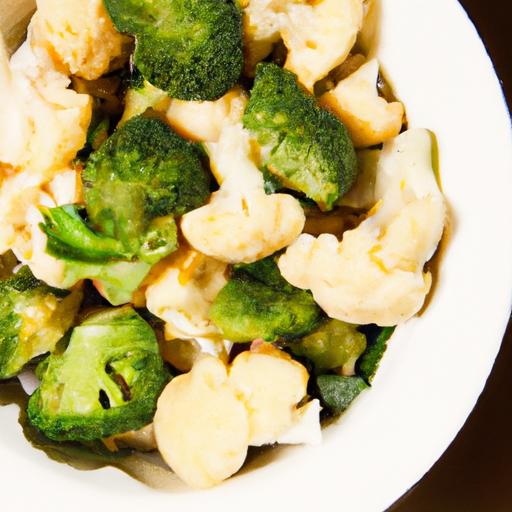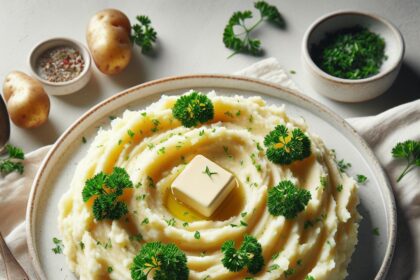There’s nothing quite like the satisfying crunch of freshly harvested cauliflower and broccoli-those emerald and ivory crowns bursting with nutrients and flavor. But keeping these vibrant veggies crisp and fresh beyond the market trip can be a challenge. Whether nestled in a bustling fridge or packed for a week of meals, cauliflower and broccoli often lose their charm, turning limp or spotted before you get a chance to enjoy them at their best. In this article, we’ll unlock expert tips and clever storage secrets to preserve that garden-fresh snap, ensuring your cauliflower and broccoli stay as delightful and nourishing as the day you brought them home. Say goodbye to wasted greens and hello to feast-worthy freshness!
Crisp & Fresh storage is essential when it comes to preserving the vibrant crunch and wholesome flavor of cauliflower and broccoli. These vegetables are nutritional powerhouses, but without the right environment and techniques, their freshness can rapidly diminish, leaving you with limp, unappetizing florets. Whether you’re prepping for a week’s worth of meals or storing them after a farmer’s market haul, mastering these storage strategies ensures every bite tastes garden-fresh.
Prep and Cook Time
- Preparation: 15 minutes
- Storage Prep: 10 minutes
- Total Time: 25 minutes
Yield
Storage tips designed to keep up to 2 large heads or 4 cups of florets fresh.
Difficulty Level
Easy – Perfect for all skill levels eager to maintain vegetable freshness.
Ingredients
- 1 large head cauliflower, fresh and firm
- 1 large head broccoli, with tight florets
- 1 tablespoon white vinegar (optional – for freshness boost)
- Paper towels, absorbent
- Perforated plastic bags or breathable produce bags
- Microwave-safe container or glass storage box with vented lid
- Kitchen scissors or a sharp chef’s knife
Instructions
- Inspect and Trim: Start by removing any leaves or discolored parts from your cauliflower and broccoli. Cut the heads into bite-sized florets using kitchen scissors or a sharp knife, which helps control moisture and promotes even storage.
- Wash Properly: Rinse florets gently under cold running water to remove dirt but avoid soaking. Excess water can encourage spoilage.
- Dry Thoroughly: Spread florets on a layer of paper towels and pat dry. Even a little moisture left on the surface can soften the florets over time.
- Optional Vinegar Rinse: For an extra layer of freshness, briefly dip florets in a cool solution of 1 part white vinegar to 3 parts water, then rinse with fresh water and dry thoroughly.
- Prepare Packaging: Line perforated plastic bags or breathable produce bags with paper towels. These absorb excess moisture while allowing air flow, crucial to keeping florets crisp.
- Package Florets: Gently place your dry florets inside the prepared bags. Avoid packing them too tightly-breathability is key to longevity.
- Store Correctly: Place bags inside a vented container or a storage box with a loosely closed lid. Store in the vegetable crisper drawer of your refrigerator where humidity is slightly higher than the rest of the fridge.
- Check Regularly: Every 2-3 days, swap out the paper towels if damp and remove any florets showing signs of spoilage to protect the rest.
Chef’s Notes and Tips for Success
- When prepping cauliflower and broccoli, uniform sizing aids in even cooling and moisture balance during storage.
- Keep the focus keyword in mind: crisp & fresh florets thrive when moisture and air circulation are balanced.
- Avoid airtight containers without ventilation as trapped moisture causes sogginess and promotes bacterial growth.
- Freezing is an option for long-term storage; blanch the florets for 3 minutes prior to freezing to lock in color and nutrients.
- For a quick freshen-up before use, soak florets in ice water for 15 minutes to revive crispness.
Serving Suggestions
Once at peak freshness, use your cauliflower and broccoli florets in a rainbow of dishes-steamed to tender crispness and drizzled with olive oil and lemon zest, tossed in vibrant stir-fries teaming with garlic and sesame, or oven-roasted with a sprinkle of smoked paprika for savory depth. Garnish with toasted almonds or freshly shaved Parmesan for a finishing touch that dazzles.
| Nutrient | Per 100g Cauliflower | Per 100g Broccoli |
|---|---|---|
| Calories | 25 | 34 |
| Protein | 2 g | 2.8 g |
| Carbohydrates | 5 g | 7 g |
| Fat | 0.1 g | 0.4 g |
For further information about nourishing fresh produce and storage science, visit Purdue Extension’s Food Storage Guide. Also, explore our guide on storing fresh herbs for complementary kitchen tips.

Q&A
Q&A: Crisp & Fresh – Expert Tips to Store Cauliflower and Broccoli
Q1: Why do cauliflower and broccoli go limp or yellow so quickly after purchase?
A1: Both cauliflower and broccoli are highly perishable because they have high moisture content and continue to respire after harvest. Without proper storage, they lose water and nutrients, leading to limp stalks and yellowing florets – a clear sign they’ve aged or begun to spoil.
Q2: What’s the best way to store broccoli to keep it crisp?
A2: Keep broccoli in the refrigerator, ideally in a perforated plastic bag to maintain humidity while allowing air circulation. Avoid washing before storage, as excess moisture encourages mold. If you want an extra crisp boost, wrap the florets loosely in a damp paper towel inside the bag-it helps maintain just the right moisture balance.
Q3: How can I store cauliflower so it stays fresh and white?
A3: Store cauliflower in the crisper drawer wrapped loosely in a breathable bag or cloth. This protects it from moisture loss while preventing sogginess. To keep it bright white, avoid exposure to light and humidity extremes, which promote discoloration and spoilage.
Q4: Is it better to store these veggies whole or cut?
A4: Whole is best! Cutting exposes the interiors to air and speeds up moisture loss and enzymatic browning. If you need to cut them beforehand, pat dry and store pieces in an airtight container lined with paper towels to absorb excess moisture.
Q5: Can I freeze cauliflower and broccoli? How?
A5: Absolutely! Blanch them first by boiling florets for 3 minutes, then immediately plunging into ice water to stop cooking. Dry thoroughly and freeze in airtight containers or freezer bags. This preserves texture and flavor for months, perfect for future soups, stews, or stir-fries.
Q6: Are there any clever hacks to revive limp broccoli or cauliflower?
A6: Yes! For limp broccoli, soak the stalks in ice-cold water for 30 minutes to rehydrate them. Cauliflower can perk up similarly. This simple trick can bring life back to vegetables that seem past their prime, but it’s best done sooner rather than later.
Q7: Any tips for storing these veggies if I don’t have a fridge?
A7: In the absence of refrigeration, store cauliflower and broccoli in a cool, dark place wrapped loosely in a damp cloth to maintain moisture. They won’t last as long as in the fridge but can remain usable for a day or two if kept cool and shaded.
Whether roasted, steamed, or raw in a salad, properly stored cauliflower and broccoli reward you with crunch, color, and health-boosting goodness every time. With these expert tips, your greens are set to stay crisp, fresh, and fabulous!
In Retrospect
Whether you’re prepping a simple weeknight dinner or crafting a vibrant veggie platter, keeping your cauliflower and broccoli crisp and fresh is key to unlocking their full flavor and nutrition. By following these expert storage tips-from choosing the right container to controlling humidity and temperature-you can extend the life of these cruciferous champions and reduce food waste. So next time you bring home a head of cauliflower or broccoli, treat them with a little TLC, and enjoy their garden-fresh crunch in every bite. Freshness isn’t just a state-it’s a habit you can easily master!








